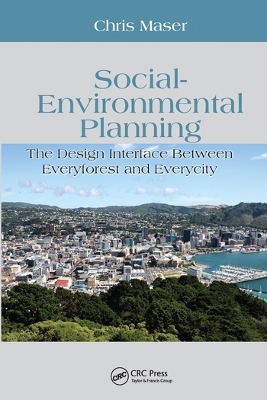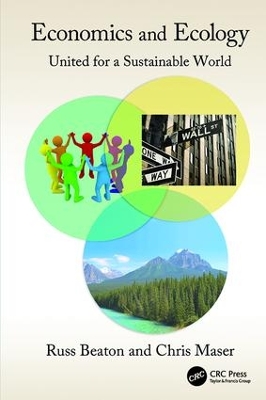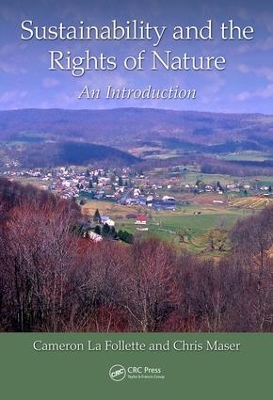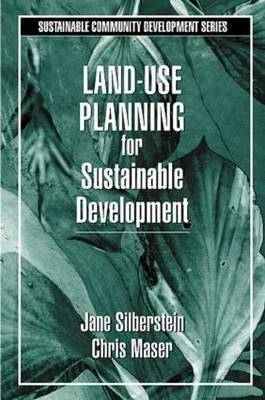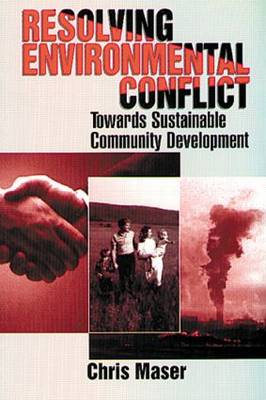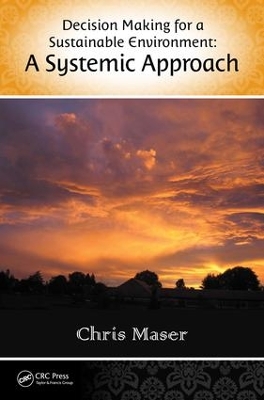Social Environmental Sustainability
6 total works
With the environment, climate change, and global warming taking center stage in the national debate, the issues seem insurmountable and certainly unsolvable at the local level. Written by Chris Maser, international consultant on forest ecology, sustainable forestry practices, and sustainable development, Social-Environmental Planning: The Design Interface Between Everyforest and Everycity focuses on community based solutions, emphasizing how the heavy lifting of sustainability will always be done inside existing cities and communities. Based on the author’s forty years of experience, the book covers the sustainability of the planet and its population when dealing with climate change.
The book provides an in-depth understanding of the commonalities of pattern between Everyforest and Everycity. Maser suggests that before changes can be made, society must adapt to the circumstances of global climate change as they already are, and then determine what we can do to stabilize global climate as effectively and quickly as possible. He explores the reciprocal interface between communities and the landscape and how, when this interface is recognized and understood, it can create solutions that work. With this comprehension, people can adapt to the present and begin determining what they can do now to leave the planet a little better for each generation.
The earth, our home, is in crisis. There are two sides to this crisis-our global economy, and its effect on the ecology of our home planet. Despite conventional thinking that typical monetary and fiscal manipulations will put us back on the path of economic growth, the reality is not that simple. Meanwhile, the natural environment is sending unmistakable warnings. Glaciers are melting; oceans are becoming dangerously acidic; species and their ecological services are becoming extinct; and weather patterns are becoming increasingly severe and unpredictable each year. The stress on resource systems of all kinds threatens to shrink the carrying capacity of the planet, even as we call upon it for increased contributions to support a burgeoning human population.
Co-written by an ecologist and an economist, Economics and Ecology: United for a Sustainable World counsels the replacement of symptomatic thinking with a systemic worldview that treats the environment and the economy as an ecosystemic unit. The first part of the book establishes the methodological and biophysical principles needed to develop the concept of socioeconomic sustainability. The second part of the book examines the misuse of economics in the service of what increasingly appears to be a ruinous pursuit of material wealth and expansion. The third part offers advice on reconciling economics and ecology by proposing an economics in which the principles employed are aligned with the biophysical principles of ecology.
This timely volume puts forth a sustainable worldview based on systemic thinking, with the emphasis more on what and how people think than on what they do. A unique reference for professionals and laypersons alike, it can also serve as a supplementary classroom text for students of economics, ecology, biology, and environmental science.
Sustainability and the Rights of Nature
by Cameron La Follette and Chris Maser
Sustainability and the Rights of Nature: An Introduction is a much-needed guide that addresses the exciting and significant paradigm shift to the Rights of Nature, as it is occurring both in the United States and internationally in the fields of environmental law and environmental sustainability. This shift advocates building a relationship of integrity and reciprocity with the planet by placing Nature in the forefront of our rights-based legal systems. The authors discuss means of achieving this by laying out Nature’s Laws of Reciprocity and providing a roadmap of the strategies and directions needed to create a Rights of Nature-oriented legal system that will shape and maintain human activities in an environmentally sustainable manner. This work is enriched with an array of unique and relevant points of reference such as the feudal notions of obligation, principles of traditional indigenous cultivation, the Pope Francis Encyclical on the environment, and the new Rights of Nature-based legal systems of Ecuador and Bolivia that can serve as prototypes for the United States and other countries around the world to help ensure a future of environmental sustainability for all living systems.
Land-Use Planning for Sustainable Development
by Jane Silberstein, M.A. and Chris Maser
The authors review the foundations of current land use practices from historical, constitutional, economic, ecological, and societal perspectives. They analyze the results of these practices and suggest alternative methods for guiding, directing, and controlling the ways in which we modify the landscape. They make the case that we-as humans-have the capacity for community with all life and can ultimately embrace the notion that individual well-being is wrapped up in the well-being of the whole, and that social change can occur before major disasters require it.
This is the first book to incorporate land-use planning with sustainability. The authors offer a perspective that opens a range of possibilities for changing current methods. They tackle the difficult dilemma of creating consensus among people-tapping the powers of mind, intuition, and experience in developing a sustainable community. Using sustainability as a framework, Silberstein and Maser present the underlying concepts of sustainable land-use planning. With Land-Use Planning for Sustainable Development, you will discover an array of ideas for modifying conventional planning for and regulation of the development of land.
Resolving Environmental Conflict Towards Sustainable Community Development
by Chris Maser and Carol A Pollio
Resolving Environmental Conflict explains the transformative approach toward facilitation. It shows how to help parties empower themselves to define the issues and decide the settlement on their own terms and on their own time through better understanding of one another's perspectives.
The transformative approach allows a conflict's outcome to be decided solely by the participants even though resolution may not take place for some months after facilitation is complete. Inherent in the solution is a shared vision for the community without which sustainability is not possible.
Beyond shared vision, this book examines notions of development, sustainability, and community and the synergism of ecology, culture and economic needs that promote a healthy environment enriching the lives of all its inhabitants.
